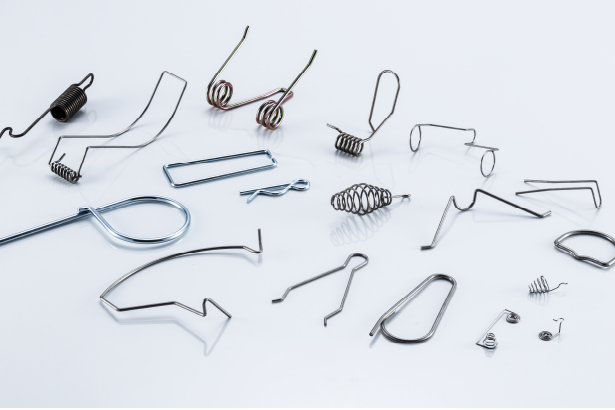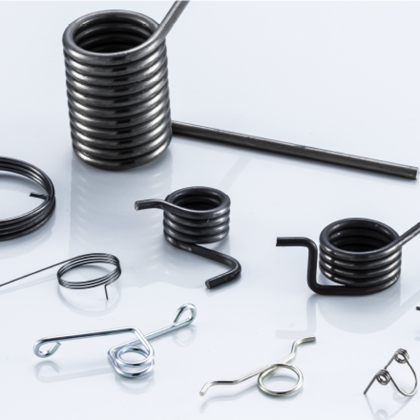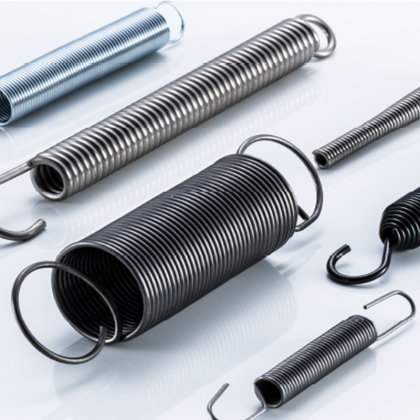
COMPRESSION SPRING
Compression springsare wound or constructed to oppose compression along the axis of wind. They can be wound in constant or variable pitch along their length, be constructed of stacked spring elements, and can be straight, conical, or have a variable diameter. The most important parameters to consider when searching for compression springs are the dimensions. These include outer diameter, inner diameter, wire diameter, free length, and solid height. The free length is the overall length of a spring in the unloaded position. The solid height is the length of a compression spring when under sufficient load to bring all coils into contact with adjacent coils. Other important considerations include spring rate and design units. The spring rate is the change in load per unit deflection, generally given in pounds per inch or Newtons per millimeter (N/mm). Design units can be specified in English or metric units. Some manufacturers may specify both.
Common materials of construction for compression springs include stainless steel, high carbon steel wire, alloy steel or music wire, nickel base alloy wire, brass, and hard drawn. Spring steel is a standard industrial grade of steel specifically used for spring making. It exhibits good elastic and return properties. Music wire is a common and relatively inexpensive high-carbon steel alloy used for spring manufacture. It is cold drawn and offers uniform tensile strength. Stainless steel exhibits good corrosion resistance for specialty applications. Exotic metals and their alloys with special properties and applications; include such materials as beryllium copper, beryllium nickel, niobium, tantalum, and titanium. Plastic is a broad category including all thermoplastic materials used by custom spring winding service providers. Plastic springs may be used in light-to-medium duty applications for quiet and corrosion-resistant qualities. Configuration options for compression springs include straight coil, ground ends, closed or squared ends, and die spring. A straight coil configuration is a standard coil type for compression springs. Other coil types are hourglass, conical and barrel types.
A compression spring that has ground ends has one end that is ground to provide a flat plane. In a closed or squared ends configuration the ends of the compression spring where pitch of the end coil is reduced so that the end coils touch. Die springs are helical compression springs generally of rectangular section. They can carry roughly 30% more load for the same deflection than can be carried by a round section. They are not solely used in dies but find application in clutches, brakes, farm machinery and aircraft mechanisms.





Reviews
There are no reviews yet.